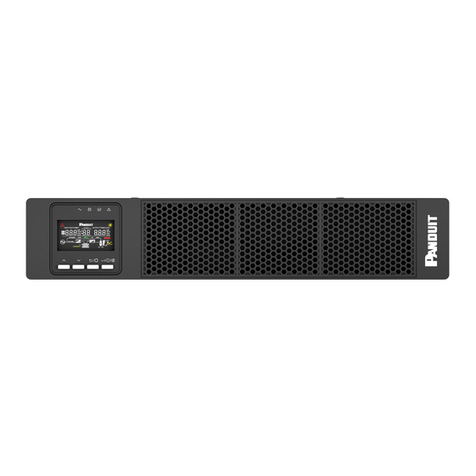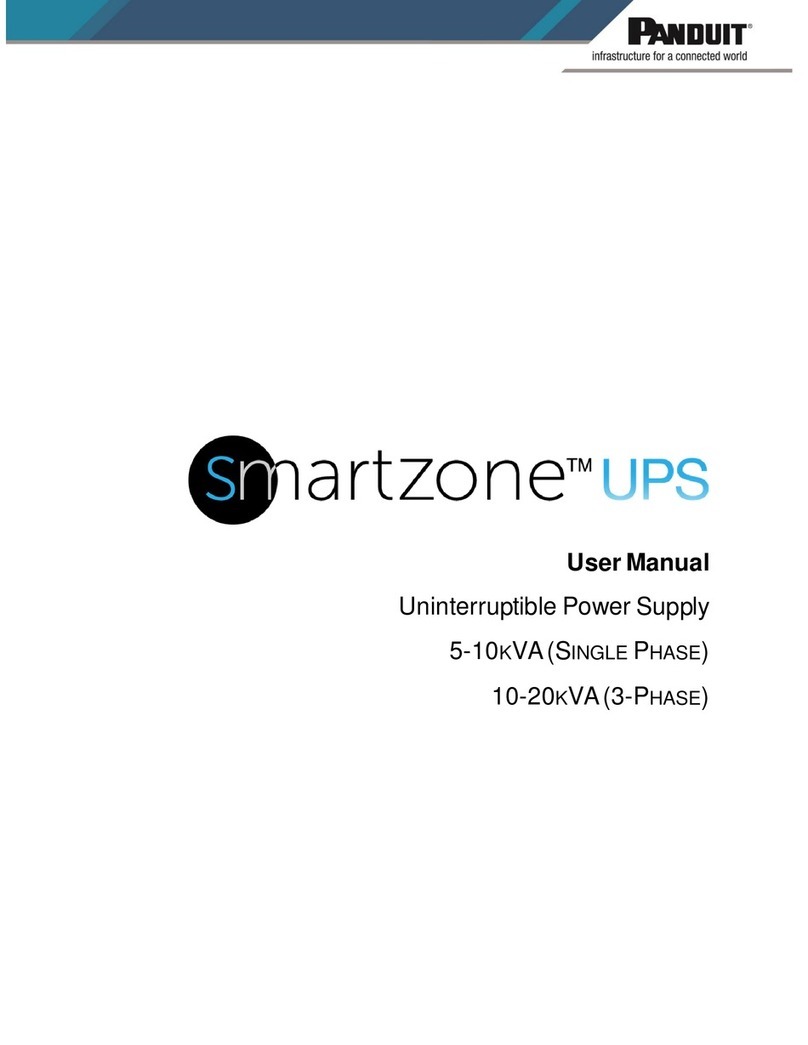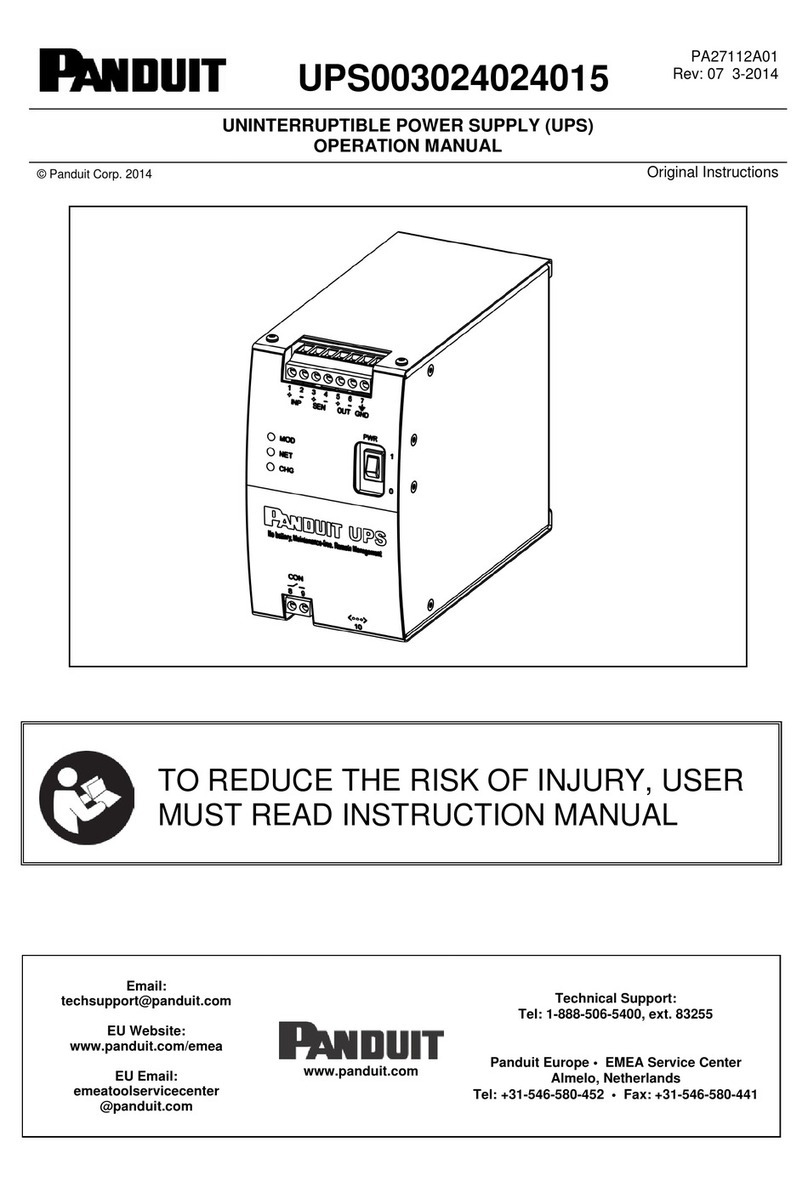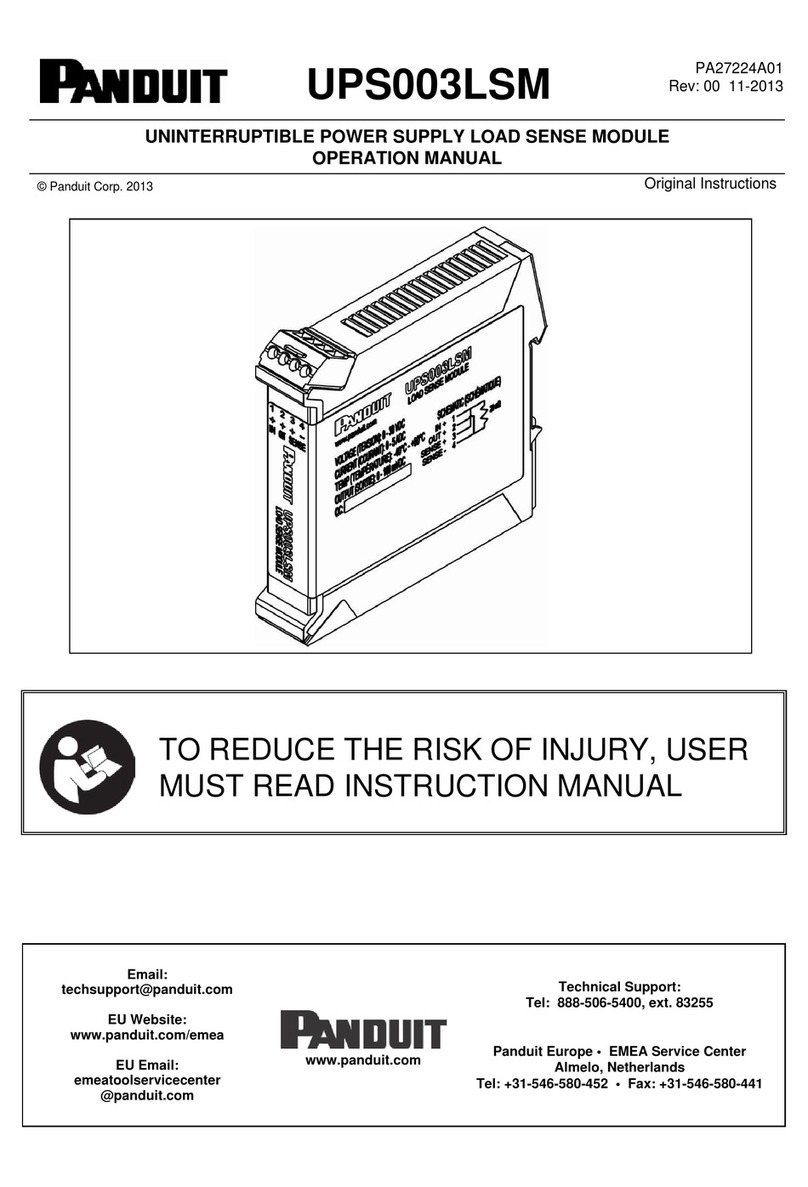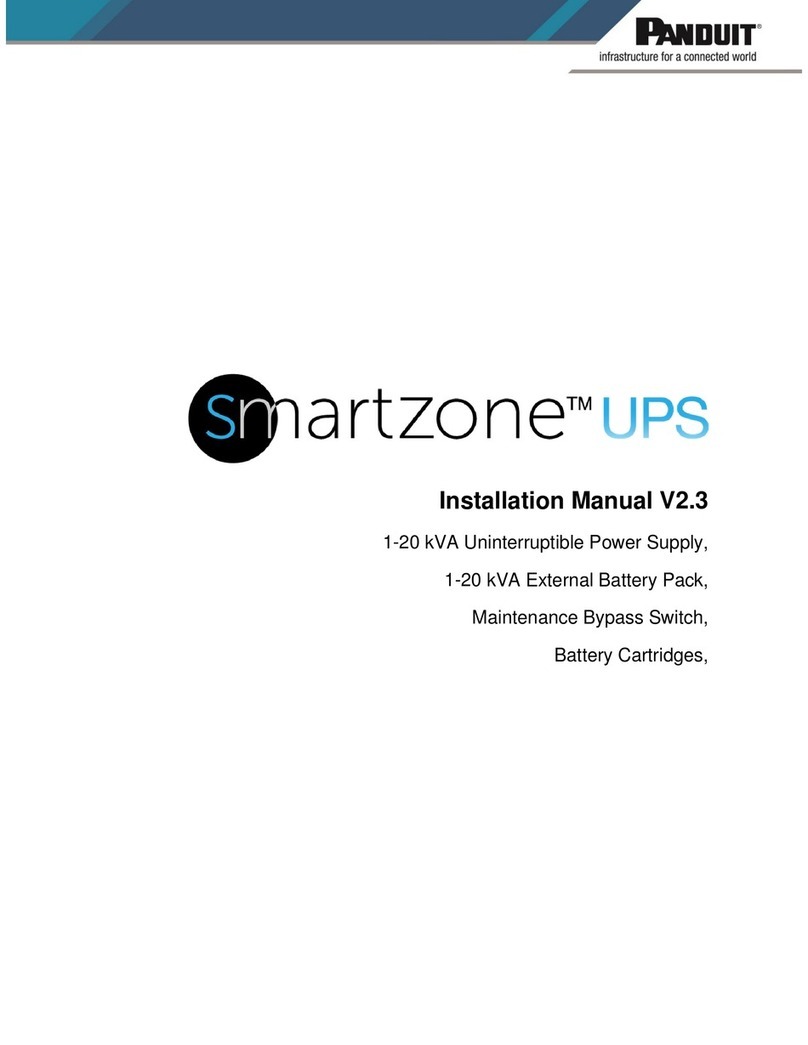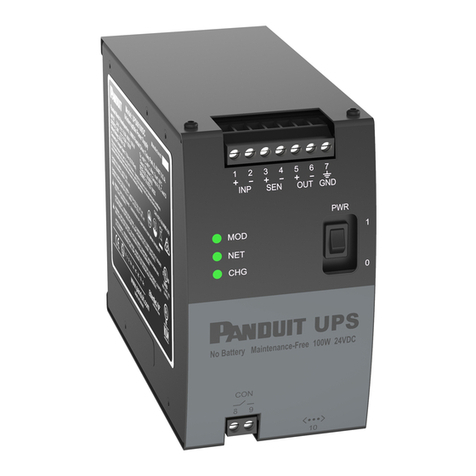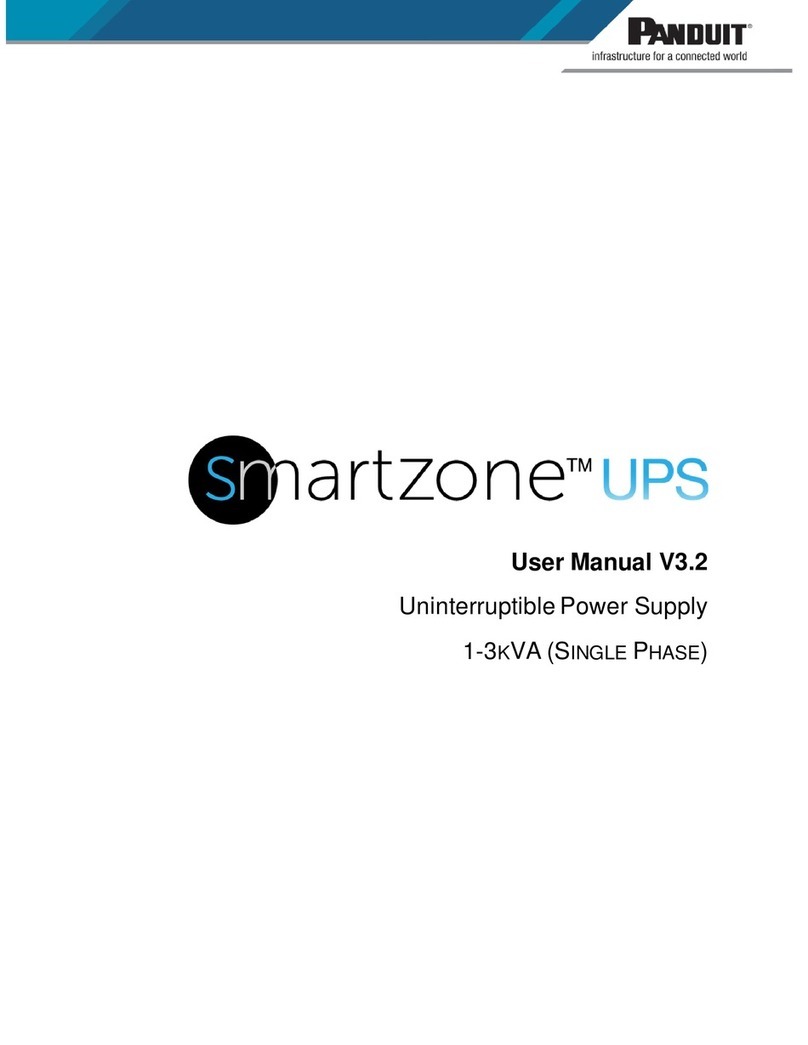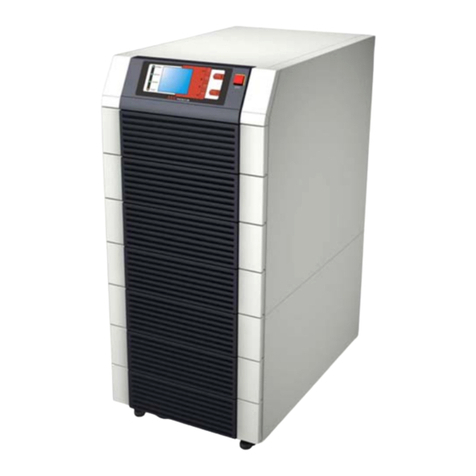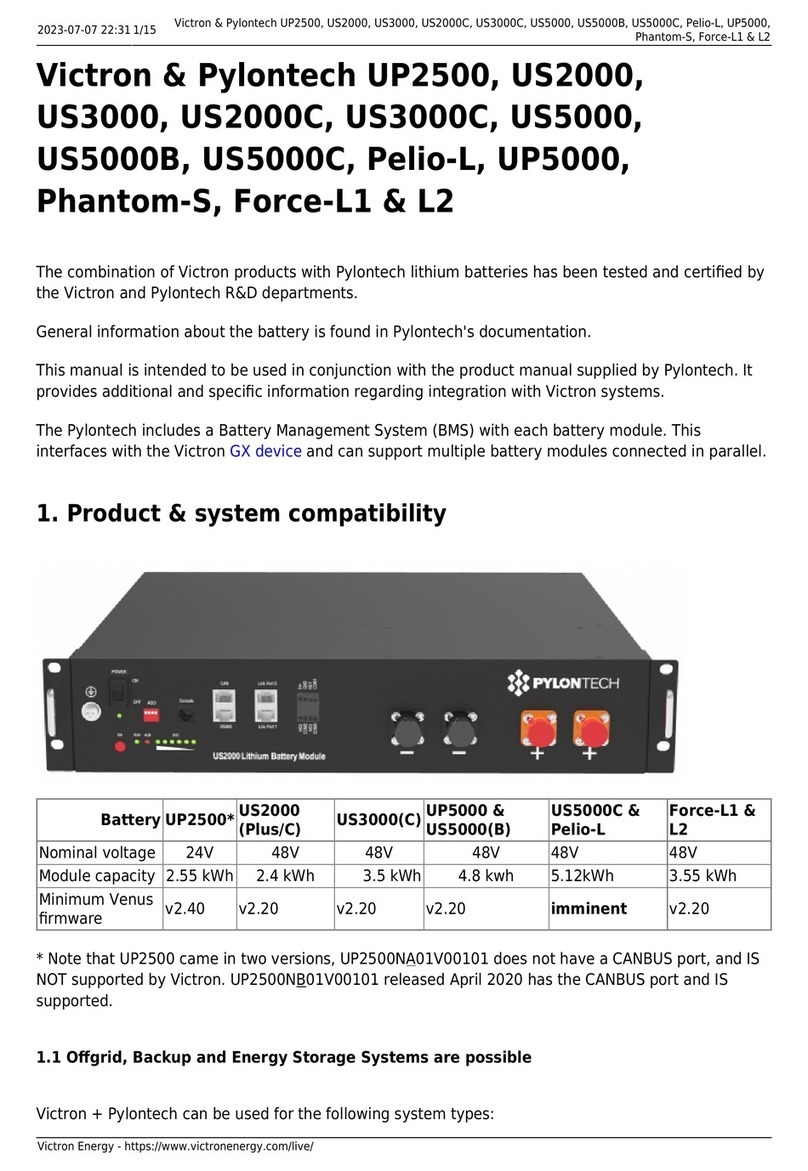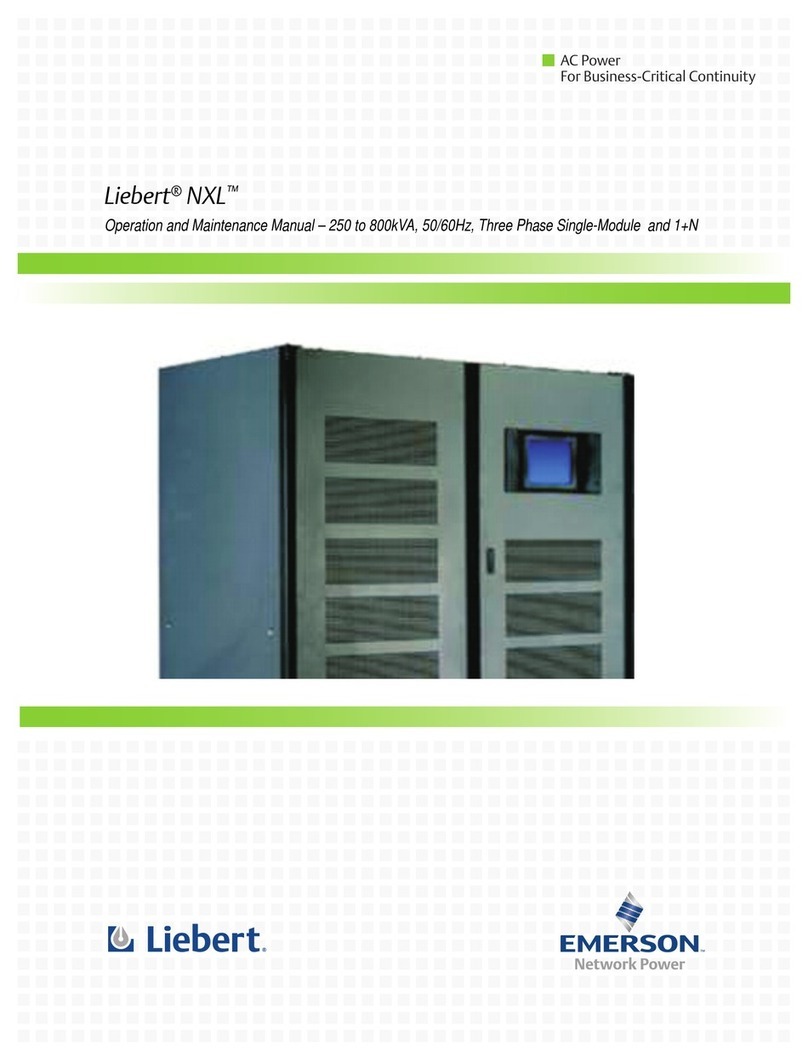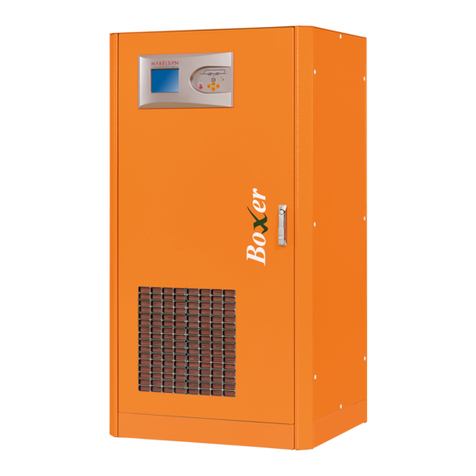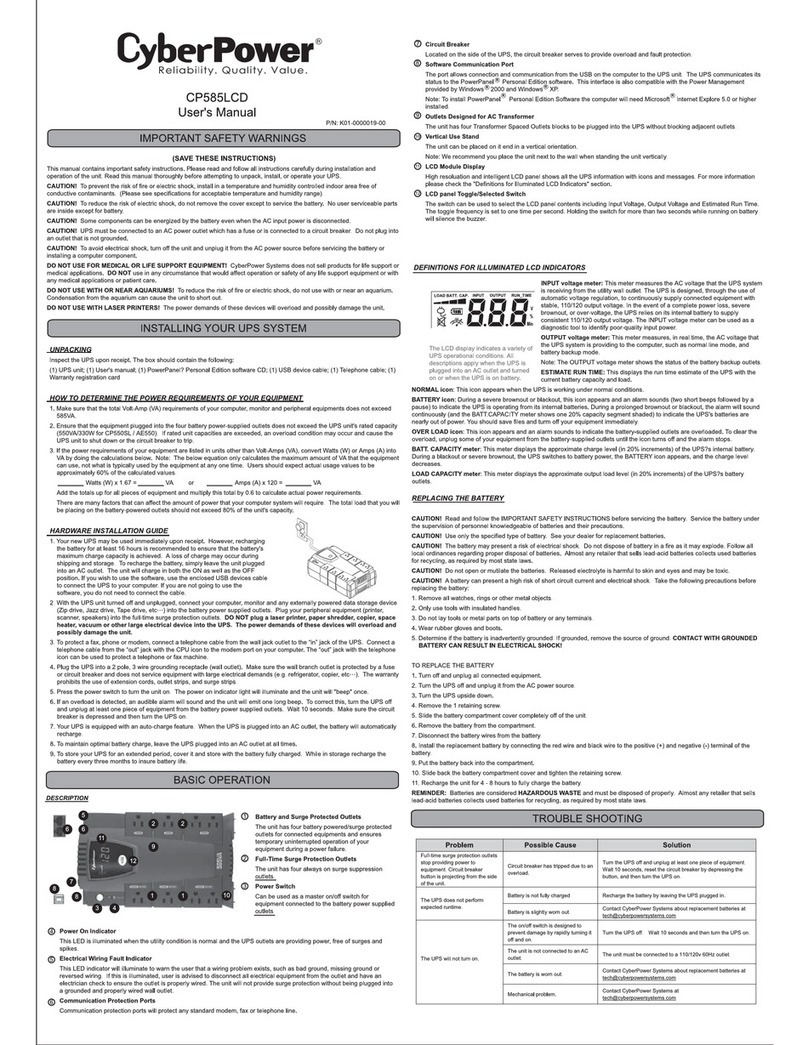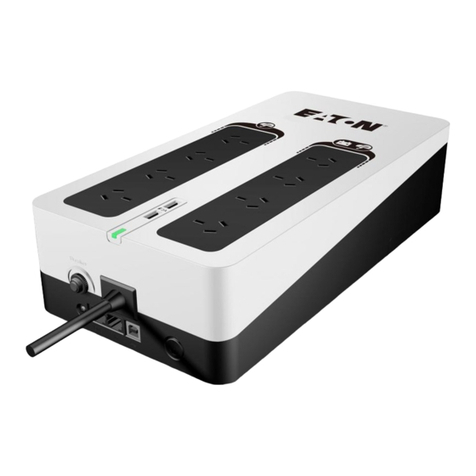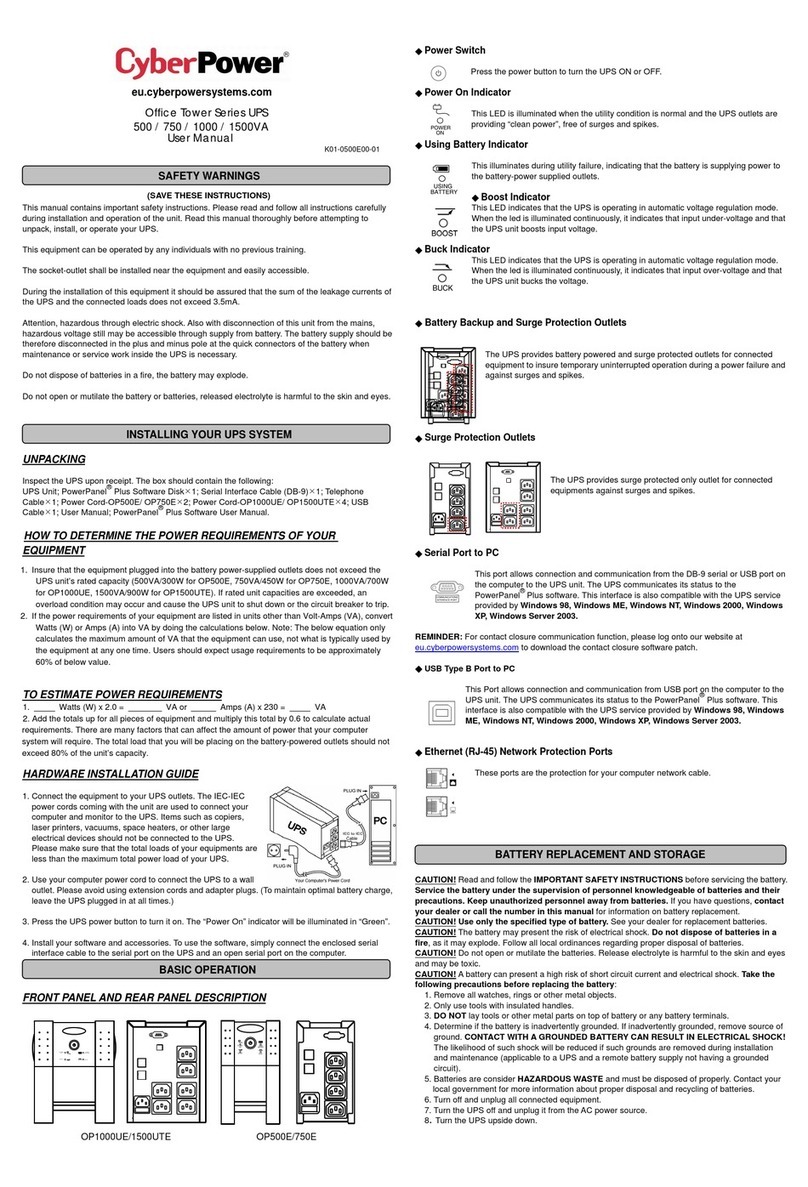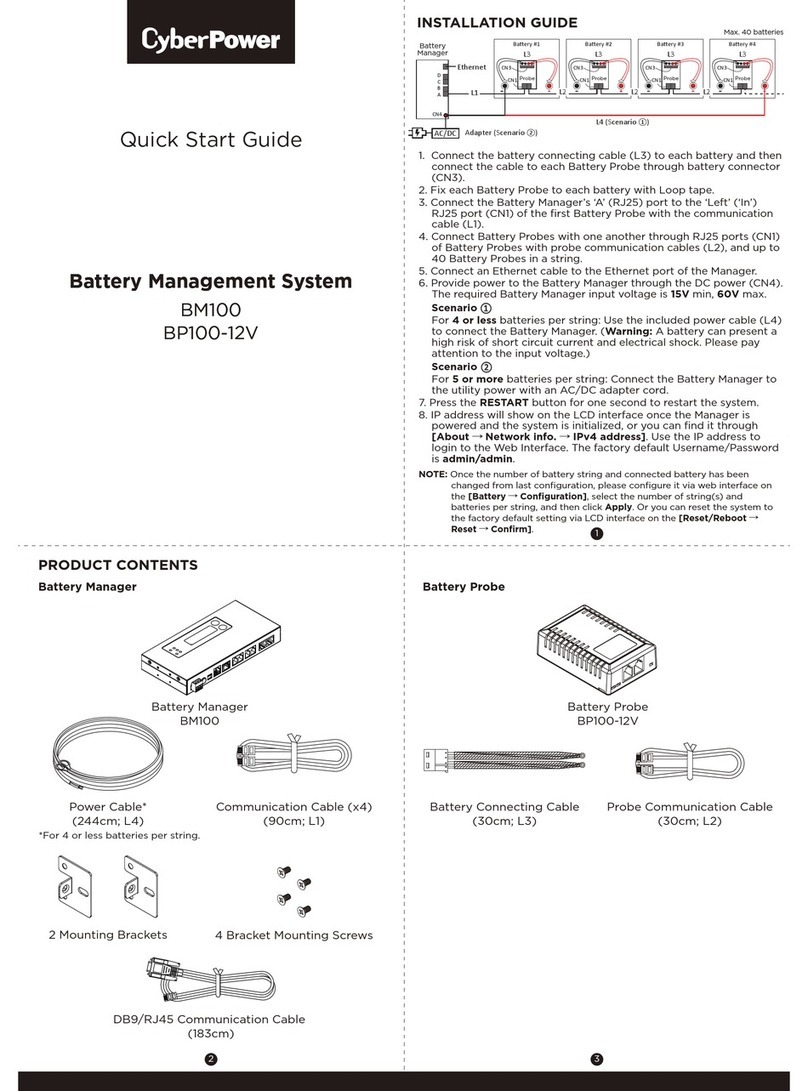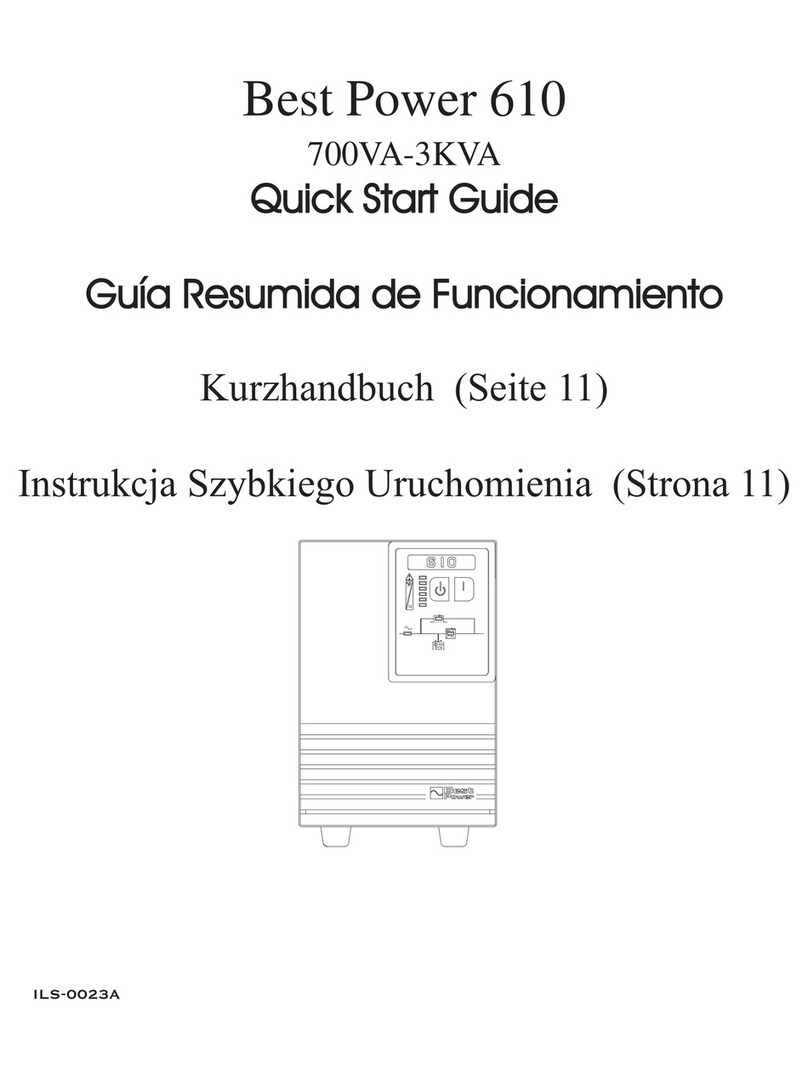
ECO Mode
When the UPS is in Normal mode and the power requirements for the load are not
critical and the input source is stable (no power anomalies), the UPS may be set to
Energy Savings (ECO) mode to increase the efficiency of the power supplied through
the UPS. In ECO mode, all voltage increases and decreases will be passed along to the
load. Additionally, any frequency variations on the input will get passed on to the load.
When the UPS is manually configured for ECO mode, the output relay opens, and the
bypass relay closes. The input relay remains closed, continuing to keep the backup
batteries charged. When the UPS is in ECO mode the source power is minimally
conditioned.
If the input power is lost while the UPS is operating in ECO mode:
•The batteries will stop charging (input relay will open)
•The bypass relay will open
•The output relay will close
•The battery will start providing the DC power to the DC to AC inverter, continuing
to provide uninterrupted AC power to the load.
The UPS is now in the Battery state.
While the UPS is operating in ECO mode, if the input power has any other anomaly
(power sags, power surges, under-voltages, over-voltages, electrical line noises,
frequency variations, switching transients, and harmonic distortion) that is outside of the
bypass set ranges:
•The input relay will remain closed (continuing to charge the battery– assume the
anomaly is still within the operating range of the UPS)
•The bypass relay will open
•The output relay will close
•The rectifier will start providing the DC power to the DC to AC inverter, continuing
to provide uninterrupted AC power to the load.
The UPS is now in the Normal state. Ifthe anomaly is outside of the UPS operating
range, then the UPS will transition to the Battery state. Refer to Appendix C: State
Transitions Based on External Events.
If an internal or an external output event occurs while operating in ECO mode, the
bypass relays will open, the input relay will open, and the output will shut down. AC
power to the load will be lost.
